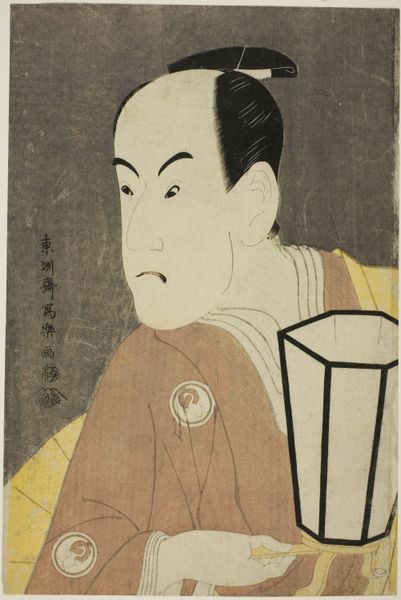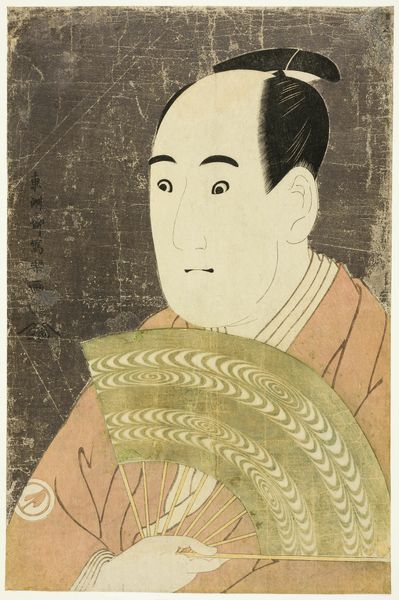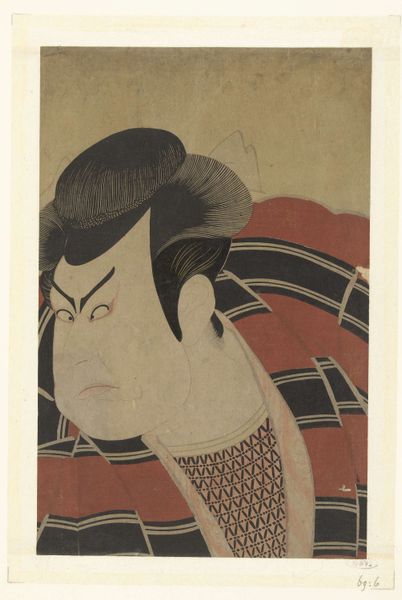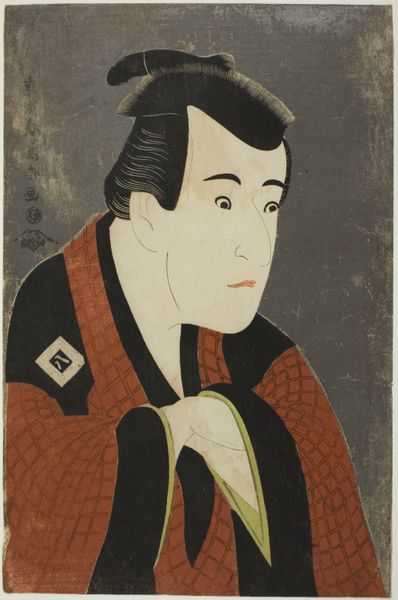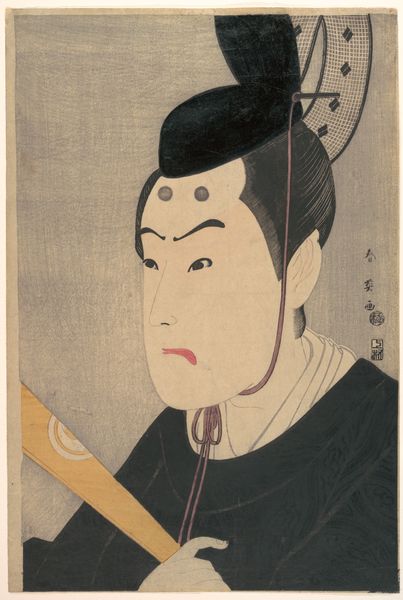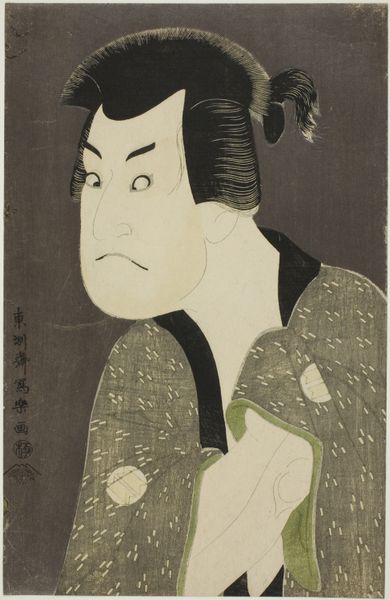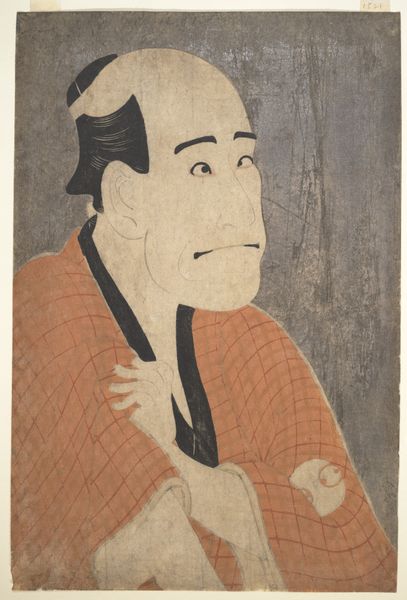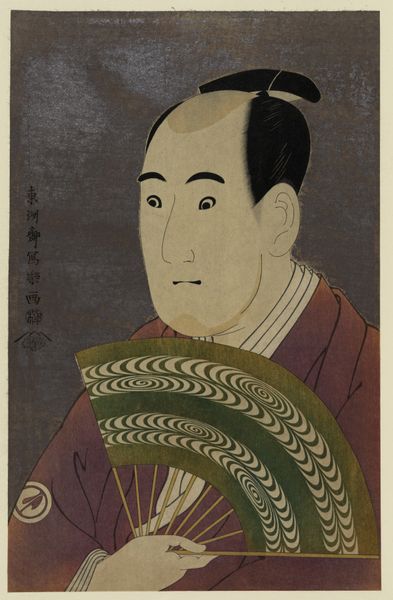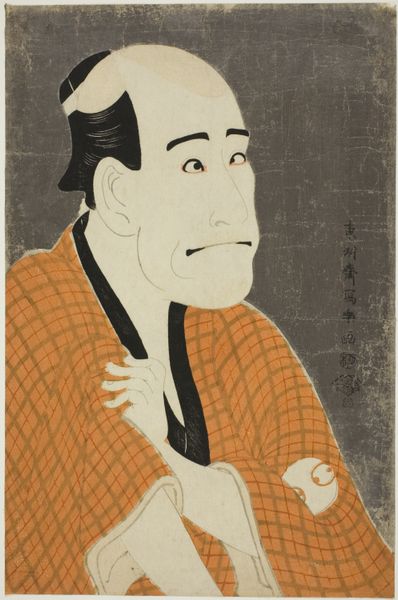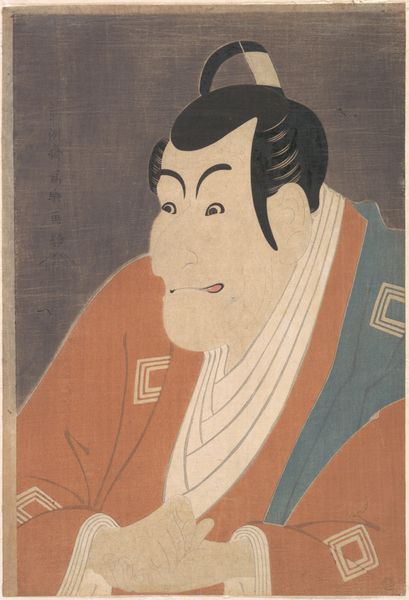
Bandō Hikosaburō III as Sagisaka Sanai in the Play "Koinyōbō Somewake Tazuna" 1795
0:00
0:00
print, woodblock-print
#
portrait
# print
#
caricature
#
caricature
#
ukiyo-e
#
woodblock-print
Copyright: Public domain
Curator: Before us, we have "Bandō Hikosaburō III as Sagisaka Sanai in the Play 'Koinyōbō Somewake Tazuna'," a woodblock print dating back to 1795. It was created by Tōshūsai Sharaku. Editor: What a fascinating portrait. There's an almost palpable tension in his expression—the slight downturn of his lips, the focused gaze. It's arresting. Curator: Sharaku was known for capturing actors in kabuki theatre with unflinching realism. This print is a prime example of *ukiyo-e*, focusing on popular themes and the ephemeral nature of life, immortalizing this actor’s stage presence. Editor: The simplification of form is quite striking, particularly in the planes of the face and the almost diagrammatic rendering of the lantern. What's also interesting is the use of line, to describe both form and emotion. Curator: Precisely. Consider also the cultural context: actors in this period held a complex social position. They were revered, yet also considered outside the social hierarchy, which adds another layer of intrigue. Caricature as a form offers insight to this tension, and Sharaku certainly was a master. Editor: The muted color palette reinforces that sense of gravity too. And the stark contrast of his robes emphasizes the stark simplicity of the other elements of the composition, further driving home that potent moment of drama. Curator: This use of minimalist techniques is very particular to Sharaku; prints of this nature helped shape the image and iconography of celebrities and performers and ultimately changed the scope of popular portraiture during the Edo period. Editor: Looking closely, the seemingly deliberate asymmetry almost lends the character vulnerability. And this is all within the very specific, formalized framework of Japanese printmaking, which amplifies it all further! Curator: The reception to Sharaku's work was initially mixed. But later, his portraits, celebrated for their stark and unforgiving portrayals, gave us rare and valuable insight into the vibrant, celebrity-driven culture of Edo-period Japan. Editor: It leaves you wondering, doesn't it, about the power of capturing fleeting moments and what they tell us about both the subject and the society from which they emerge? Curator: Indeed. It compels us to consider the delicate interplay of form and context, history and expression that makes a work truly unforgettable.
Comments
No comments
Be the first to comment and join the conversation on the ultimate creative platform.
